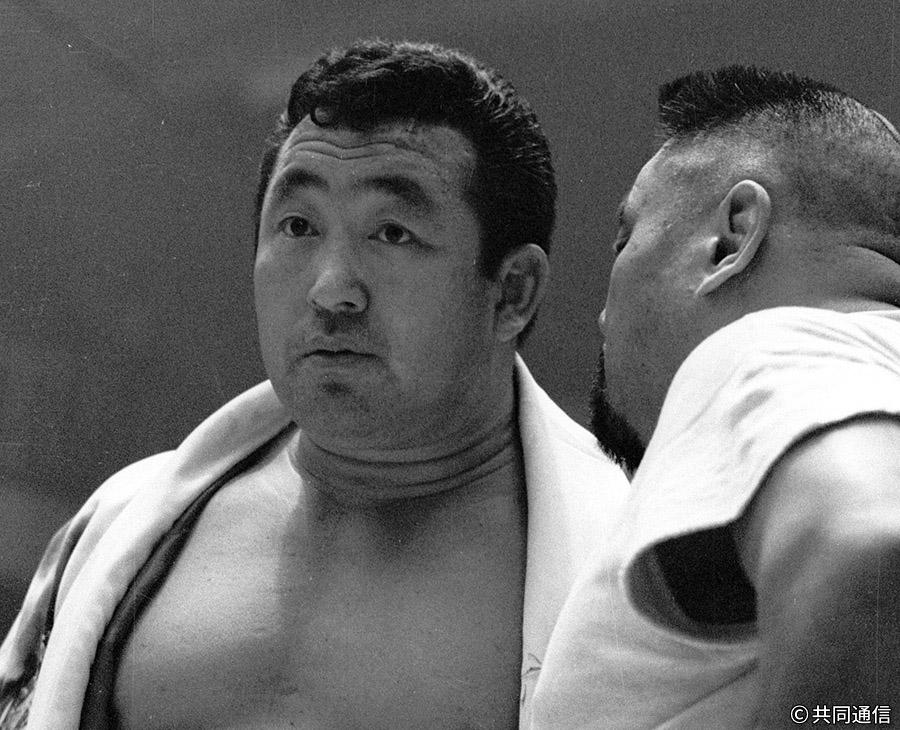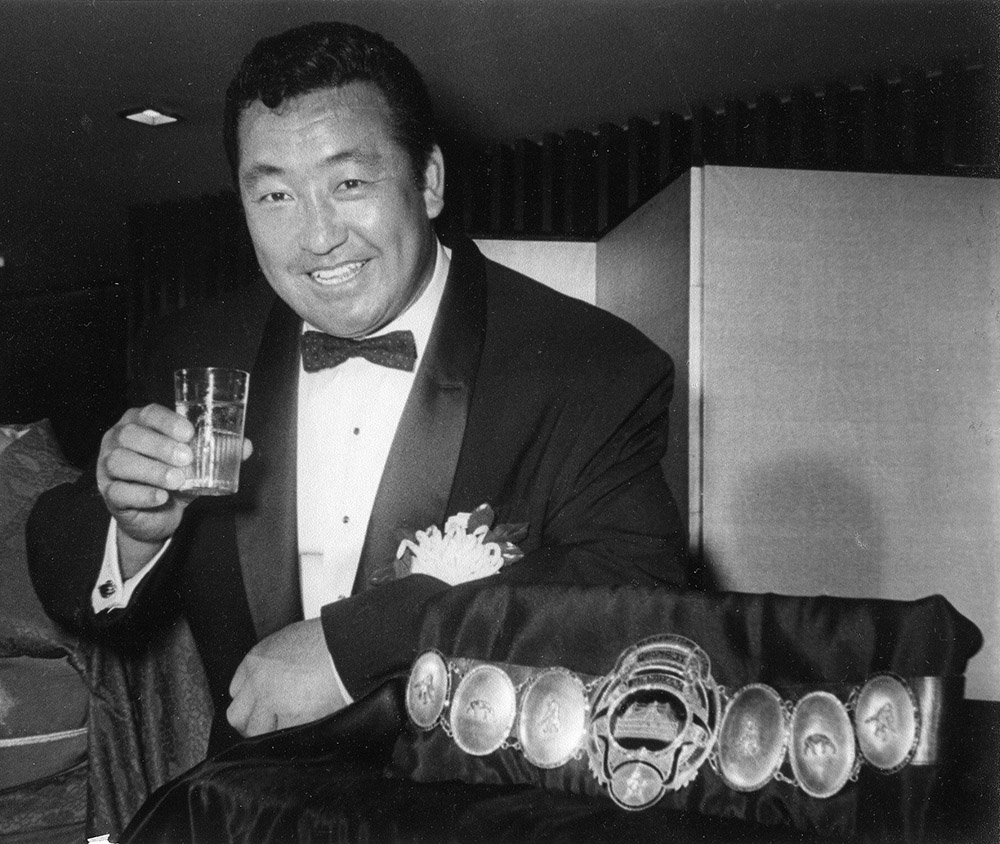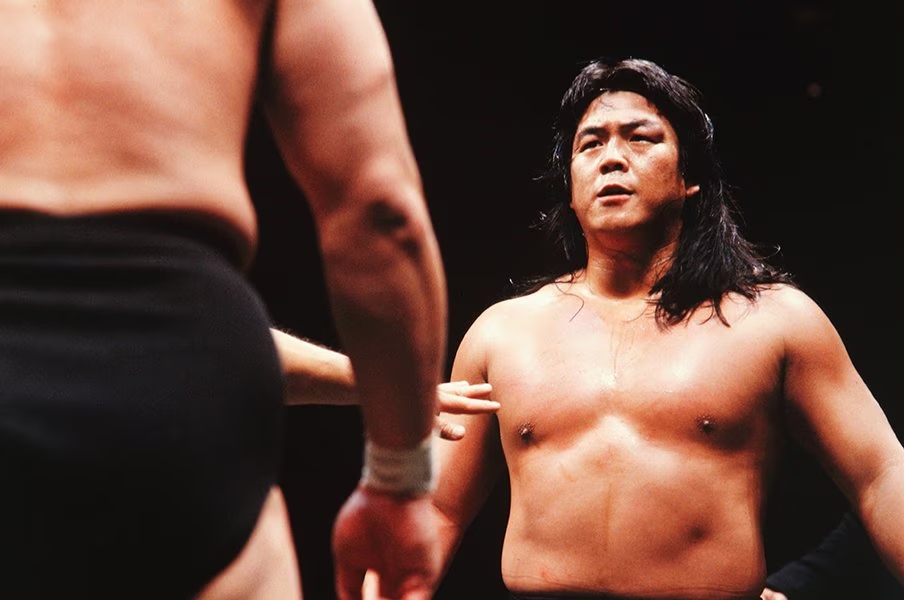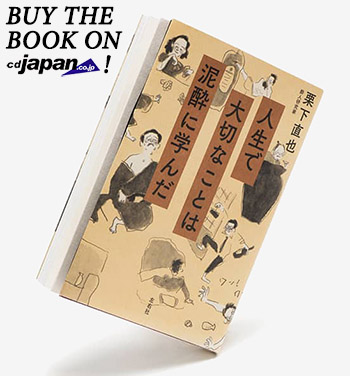Rikidozan
If you have to start up a new business
Pro wrestler | 14 November 1924 – 15 December 1963
In every community, there’s always that one person who acts without any consideration for others, making trouble for everyone around them. And yet, for some reason, you just can’t seem to hate them.
Loved by their seniors and trusted by their juniors, they act with reckless abandon. Even so, it’s impossible to dislike them. You don’t love them, but you also can’t help but be drawn to them.
This time, we will be covering a national pro wrestling star of the postwar period: Rikidozan. Some of you might be going, “Who’s that?” Let us thus first take a brief look back at this man’s journey to becoming a wrestler.
Born in 1924 in the Democratic People’s Republic of Korea, his real name was Kim Sin-rak. He was later adopted, thus becoming Momota Mitsuhiro, and by the time he became a national star he was fully Japanese, “born and raised” in Nagasaki. While today it is pretty much self-evident, back then it was considered the biggest of taboos in the media to mention his Korean origins.
At age 13, he took part in a Korean wrestling tournament and won third place. At age 15, he joined the Nishonoseki sumo stable, winning matches with unstoppable momentum. In just nine tournaments, he rose from jonokuchi (the lowest division in sumo) to juryo (second-highest division). He kept rising in the ranks rapidly, and at age 24, he was promoted to sekiwake (the third-highest rank in sumo).
But then, just before a tournament where he was looking at the possibility of becoming ozeki (second-highest rank), he suddenly fell ill. The constant coughing, congested throat, and nausea wasn’t going away, and he lost 20 kilos. He had gotten a lung fluke infection from eating mitten crab before the tournament, and it was thought that he would never fully recover.
He sold his home, scraping together the money for treatment, and later did make a recovery. But now, due to the feudalistic nature of Japanese society at the time and what with the issue of his origins, he suddenly found himself getting a cold reception. And so, he chose to retire.
Rikidozan, armed with his conviction of “if you’re strong you get to do anything you want,” was a thoroughly unconventional man. He would ride his huge motorcycle to his matches at the Kokugikan Arena, wearing a jacket with his topknot. This was a man unbound by “social etiquette.” For this reason, some of his senior wrestlers openly disliked him.
On the other hand, he took good care of his juniors. He practiced hard himself, but he also allowed less-gifted juniors of his to train with him. And after practice, he always had a little something prepared to make them happy. Namely, beer.
It’s said that when they were on tour and Rikidozan would stop by at a local liquor store, he would present them with a business card—it is unclear exactly whose—and just like that, he would be given two cases of 24 beers each. This was in the postwar period where beer was not something that was always readily available, so this obviously captivated his many juniors.
But then sometimes he could be too good to his juniors, to the point that they couldn’t even keep up. If you went out drinking with Rikidozan, you were not going to walk away unharmed.
On the days before important matches, Rikidozan liked to hold a certain customary event.
They would go to a restaurant. There, he would take all the food out of a large bowl the size of a washbasin, and then fill it to the brim with alcohol. As soon as he’d finished pouring, he would instruct his juniors on what it was they had to do. “All right. Drink this all in one go. And don’t even think about breathing between sips!” When the junior in question would inevitably have to stop for air, he would get whacked with a beer bottle.
(In recent years, there was another incident of a yokozuna (grand champion) striking his junior with a beer bottle and being forced to retire as a result. Sumo wrestlers sure do seem to love their beer bottles!)
This sort of “intensive training” conducted by Rikidozan would occur not just once or twice in a single setting, and punishments were not limited only to beer bottles—one junior got served with a punch to the mouth, getting his front teeth knocked out. Today, they would just call this guy a tyrannical bastard.
But this was nothing yet. The thing his juniors feared the most was the “glass eating.” According to Oshita Eiji’s book Rikidozan no Shinjitsu, it was not a pretty a sight.
“Eat it!”
In that thick hand of his, he was holding out a glass cup. Yoshinosato sat there dumbfounded. But if he didn’t do as he was told, he knew he was in for a beating. “Fine, screw it!” And so, he started gnawing. But he couldn’t manage to do it properly, and as fragments of glass pierced his oral cavity, his mouth was soon filled with blood.
Well, yeah. Munching on glass tends to have that effect. Although apparently not so for Rikidozan. Irritated, he gave them a demonstration.
Rikidozan, while turning the glass round and round in a circle, chomped on it as he went. They could hear the muffled sounds of glass breaking into fine pieces. When he’d gotten it all in his mouth, he swallowed it in one go as if he was eating pieces of candy.
He did what?
Seeing him go this far, what choice did his juniors then have but to follow his lead and say thanks for the meal? Even Yoshinosato—while wondering why on earth he was having to go through with something like this—said “To hell with it!” and swallowed. He said that for the next ten days, he could feel the glass powder that still remained inside his mouth.
While some believe this glass-eating story to be just your typical pro wrestler fiction that they think up to make themselves look big, people like author Ishihara Shintaro and former professional baseball player Harimoto Isao (known for his “katsu!” battlecry) have spoken about how they also witnessed Rikidozan do this in-person, and how shocking it was.
While pro wrestling is a world that is all about walking that fine line between truth and fiction, the drinking habits of wrestlers is not something that can be measured with common sense.
To go on a bit of a tangent…
If Rikidozan was who led the pro wrestling boom in the immediate postwar period, then it was Choshu Riki who was responsible for supporting the backbone of the sport in the Heisei era (1989–2019). If you’re someone who has no interest in pro wrestling and you don’t know who that is, just imagine someone who looks like comedian Choshu Koriki. (Though it should really be the other way around.)
Now, here’s another guy whose drinking habits were something else altogether.
About a decade ago, when his organization was going through difficult times, Choshu became a pretty serious drinker. It was to the point where it would have most likely killed your average working man.
He would start drinking in the morning, the previous night’s empty bottles lined up in the kitchen. He didn’t care as to what type of alcohol it was, and in the end he was just drinking the cheapest, convenience store shochu. In other words, he was at that terminal stage where it didn’t matter what it was as long as it contained alcohol.
He looks back on this time in Tazaki Kenta’s Shinsetsu Choshu Riki 1951–2018.
I knew I was drinking myself to death. But I also knew I was stronger than most people, so it was going to take a bit longer for it to happen.
And so, I just kept the TV on, and I spent every day like that.
By “like that,” he means that he threw up his arms and legs, and he sat there, staring into the abyss as he drank.
No matter how you look at it, this was not good. If you can’t picture what that actually looks like, just try imagining a very big man who starts drinking first thing in the morning, staring at the TV, and he simply does not stop. This man was driving at full speed on the road of alcoholism. But, just as he’d correctly surmised, he had that unusual physical strength, and thus he never did cross “that” line. Just as you’d expect of a pro wrestler, I suppose.
Okay, so then exactly how much was this guy drinking? Pro wrestling books and magazines all give differing accounts, so perhaps it is the third-party sources that might offer us a more impartial perspective.
Describing a more recent episode, manzai comedy performer Hachimitsu Jiro told a story on the internet about a time he was riding in first class on a bullet train with Choshu Riki. The two were not previously acquainted, but when Hachimitsu went over to say hello, Choshu asked if he wanted to have some drinks together. (A surprisingly fun-loving guy, this Choshu!)
And so they got to drinking, and between the two of them they drank around 60 cans of beer and chu-hi, completely emptying out the catering trolley on the train. Midway through they even started buying small bottles of whisky and water, but the trolley ran out of even those because the two drank them all. Kind of makes one speechless.
And that’s not all. As Choshu drank, he would eat small bags of things like dried squid and peanuts and rice crackers, destroying one bag in about two mouthfuls. (What is this guy, a whale?) Of course, they even ran out of all the snacks on the trolley. It must have been a real tragedy for any other drinkers who happened to be sharing the train with them that day.
But there was one Goliath among men who even our own Choshu would speak of in awe: Andre the Giant. As Choshu once spoke on a TV show: “The guy drank all the beers on Pan Am!” The other people appearing on the show asked, “Pan Am?” Choshu replied, “The airline!,” knocking the wind out of everyone present.
In other words, Andre the Giant literally drank all the beer loaded onto a Pan American Airlines flight.
In fact, in the waiting room at his matches, Andre apparently had a special icebox which would always contain at least ten bottles of wine. He would drink them all, holding the bottles using only his index and middle fingers like one would do when smoking a cigarette.
Okay, but to get back on track…
After retiring from sumo, Rikidozan would then make a switch to pro wrestling. But in the interim, he actually worked as a company employee. Having suddenly been forced to quit sumo, he now had no plan for his future.
He got a job at a construction company with the help of Nitta Shinsaku, a sponsor from his sumo wrestling days. He was even given a two-story house in Tokyo’s Nihonbashi Hamacho, along with a 50,000 yen salary. In today’s currency, that would be around 350,000 to 400,000 yen (USD$2,300 to $2,700), which Rikidozan himself noted was “pretty exceptional for a construction worker.”
With that said, it was still a rather frugal lifestyle compared to his sumo wrestling days. Worst of all, he was now always left with too much surplus energy. And since that was the case, his life was now going to go down one path, and one path only. That, of course, being the path of drunken violence.
In Rikidozan: Karate Chop Sekai wo Iku, he writes:
I walked around drinking like a fish every night. I would get bombed out of my mind, unable to distract myself in any way other than drinking myself to oblivion. I behaved like an animal.
Looking back, it was all extremely reckless and foolish of me…
While it does sound like he was at least a tiny bit repentant there, that doesn’t make it any better for the people who happened to be around him at the time.
The people, for example, who were there one night when he went to visit his old sumo stable.
His juniors knew that whenever Rikidozan was visiting, that meant they were going to be treated to booze, which of course made them happy. But then you also never knew when that friendly atmosphere that had always been there from the time he was on active duty would suddenly be turned on its head.
That night, a junior of his, feeling nice and tipsy, casually put his hand on Rikidozan’s shoulder and called him a sekitori, or “top wrestler.” That did it. No sooner than Rikidozan started shouting, “Who the hell are you?!,” he had smashed him on the head with a big sake bottle, covering him in blood.
Some of you might be disappointed, thinking, “But he used to hit them with beer bottles…” But don’t you worry—Rikidozan’s got you covered. He wasn’t satisfied with just the sake bottle. He quickly picked up a beer bottle, and the beating resumed. The act of hitting people with beer bottles really is like a traditional performance art in the sumo community!
Now in a panic, the other guys quickly got the bloodied wrestler to run out of the room. Fearing that Rikidozan was going to kill him if he went back inside, the man had to spend the night at the police station instead. (One almost gets the sense that if anyone was going to have to spend a night at the police station, maybe it should’ve been Rikidozan…)
In any case, with all that leftover energy, Rikidozan’s new daily routine was to get absolutely shitfaced and go on a drunken rampage. But this behavior was exactly what would lead him to the world of pro wrestling. You never know what life has in store for you.
In those days, Rikidozan was going out bar hopping with a guy by the name of Bohanek, an American who was in the US Armed Forces. One night, when the two of them were at a club in Shinbashi looking for a fight as usual, there was a large man there who happened to catch their eye.
There are various rumors about what happened next—some say the man approached them first, or that he bumped into them—but in any case, he said to Rikidozan, “You a pro wrestler? You look strong.” Rikidozan thought the guy was taking the piss, so he became furious and attempted to slap him with an open hand, but the man dodged and instead applied an armlock on him. Rikidozan was helpless to do anything.
The man was Harold Sakata, a second-generation Japanese-American. A former Olympic weightlifting medalist, he was an active pro wrestler at the time. He was in Japan for a consolation visit, and he then asked Rikidozan if he wanted to come and watch them practice. Rikidozan, curious to see what this “pro wrestling” business was all about, decided to go.
He went in with no expectations, only to find all the wrestlers there treating him like a baby. This suddenly ignited that inborn fighting spirit within him. He decided he was going to stake everything on pro wrestling.
Here, we finally start to see glimpses of something other than the “roughneck” side of Rikidozan.
He could be a smooth talker. He immediately went to Nitta, his former sponsor and current employer, and said he wanted to get into pro wrestling. His appeal was immediately rejected. “Pro-what now? No, I’m not letting you do that.” Even just to become a pro wrestler, he needed someone’s backing to put on a show. Rikidozan, currently a mere company employee, couldn’t just disregard Nitta as he was hoping he would be his financial sponsor.
Of course, Rikidozan wasn’t going to give up that easily. From thereon, he never missed his daily training. At the same time, he was also quickly closing in on Nagata Sadao, a man he had been acquainted with since his sumo wrestling days, who would later become known as the “Don of the Entertainment World.” He would visit Nagata at his residence every day. If he heard Nagata was heading out at 8:30 AM, he made sure to get there in his own car by 8:00 to see him off. Slowly but surely, Rikidozan managed to get closer to him, and it was through Nagata that he managed to convince Nitta to back him.
While Rikidozan might come across as just a regular drunk meathead, what he was doing here was gradually laying the groundwork, shamelessly cajoling to the right influential people in order to make his dreams come true.
Merely being strong doesn’t make you a man, nor does it make you a star. He would treat his juniors to drinks, and curry favor with his seniors. When you get to know the real person behind “Rikidozan the Star,” no average company employee would still think to utter statements like, “Being competent is all it takes to accomplish things.” Surely you now understand how these honest, down-to-heart “business activities” are necessary, no matter your line of work.
Everybody knows of Rikidozan’s subsequent success. He went to train in America, returned to Japan, and with the backing of Nagata and others, his act became a huge success.
When the defeated nation of Japan saw this man, mowing down white men with his karate chops, it gave them courage, and Rikidozan became the hero of all young boys nationwide.
Be that as it may, becoming a hero did nothing to improve his behavior. As more and more people flocked to wrestling, so did the fighting over interests behind closed doors become more and more intense. Rikidozan grew exceedingly suspicious of others, and his private life was soon a mess.
In his final years, he was also drinking less. Ono Banboku, Vice President of the Liberal Democratic Party who also acted as Rikidozan’s guardian, warned him to abstain from drinking. Ostensibly, he did just that. But at bedtime, he would enjoy a glass of brandy. And, of course, whenever something good happened, that was always an excuse for him to drink in public again.
Even on the night when yakuza member Murata Katsushi stabbed him in the abdomen, Rikidozan had been out celebrating the success of a show with The Destroyer, his ringside rival.
He drank at home from 10:00 AM to 2:00 PM, headed out to a restaurant early in the evening, and then it was straight into round three at an Akasaka nightclub just past 7:00 PM. The total amount of alcohol he consumed that day was a bottle and a half of whisky, seven cups (~1.3 liters) of sake, a bottle of brandy, and half-a-dozen beers.
It is now widely believed that Rikidozan’s death was not the result of him getting stabbed, but because of the wrong amount of anesthesia used during surgery after his stabbing.
History and “what-ifs” and “maybes” don’t go well together. But even so, if Rikidozan hadn’t gotten so completely intoxicated that night—had he, if not abstained, then at least moderated his drinking—history might have played out differently. Maybe he wouldn’t have become furious with Murata at the entrance of that nightclub’s toilet. Maybe he wouldn’t have beaten him half to death. Maybe he wouldn’t have gotten stabbed in retaliation.






